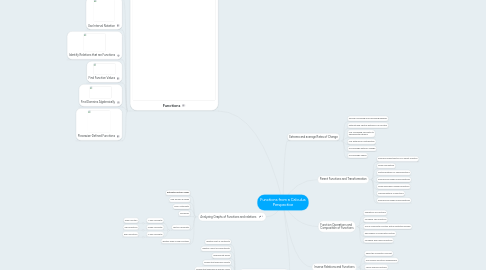Functions from a Calculus Perspective
by Owen Woellert


1. Functions
1.1. Use Set Builder Notation
1.2. Use Interval Notation
1.3. Identify Relations that are Functions
1.4. Find Function Values
1.5. Find Domains Algebraically
1.6. Piecewise-Defined Functions
2. Analyzing Graphs of Functions and relations
2.1. Estimate Function Values
2.2. Find Domain & Range
2.3. Find y-intercepts
2.4. Find Zeros
2.5. Test for Symmetry
2.5.1. Y-axis Symmetry
2.5.1.1. Even Function
2.5.2. Origin Symmetry
2.5.2.1. Odd Functions
2.5.3. X-axis Symmetry
2.5.3.1. Even Functions
2.6. Identify Even & Odd Functions
3. Continuity, End Behavior, and Limits
3.1. Identify Point of Continuity
3.2. Identify a Point of Discontinuity
3.3. Approximate Zeros
3.4. Graphs that Approach Infinity
3.5. Graphs that Approach a Specific Value
3.6. Apply End Behavior
3.7. Continuity Test
3.7.1. Continuous
3.7.2. Discontinuous
3.7.2.1. Removable
3.7.2.2. Nonremovable
3.7.2.2.1. Infinity
3.7.2.2.2. Jump
